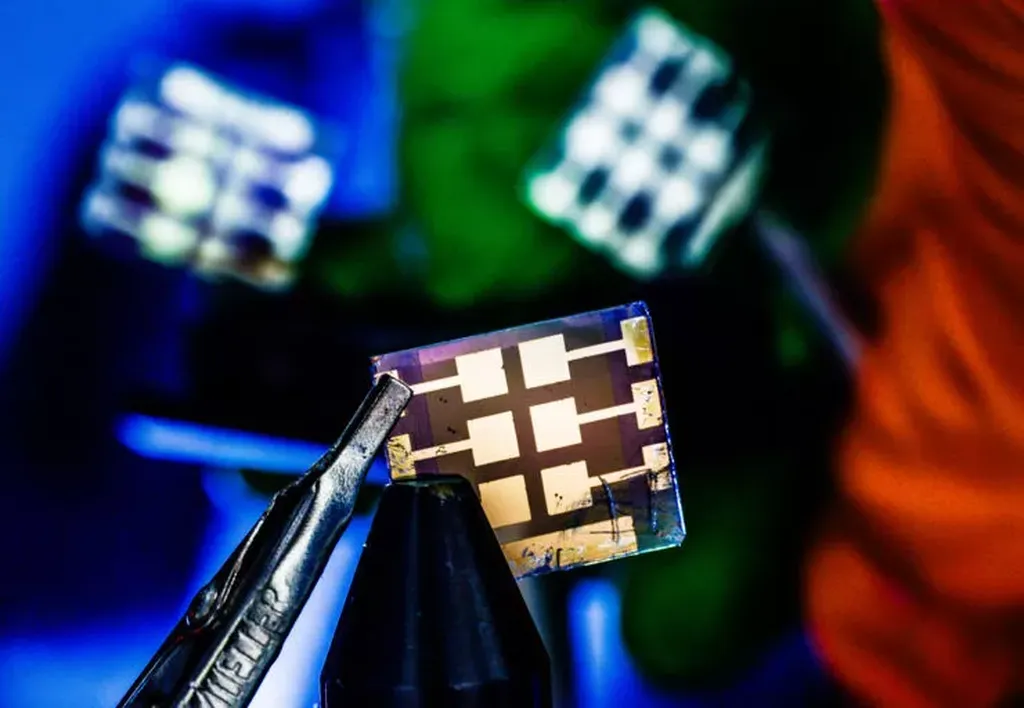In a significant stride towards next-generation display technologies, researchers have developed highly efficient deep-blue perovskite light-emitting diodes (PeLEDs) that meet the stringent Rec.2020 color standard. The breakthrough, published in the journal *Light: Science & Applications*, was led by Yusheng Song from the School of Physical Science and Technology at Guangxi University. This advancement could have substantial implications for the energy sector, particularly in the realm of ultra-high-definition displays and energy-efficient lighting solutions.
The team’s innovation centers around colloidal cesium lead bromide (CsPbBr3) nanoplatelets (NPLs), which are known for their narrow emission linewidths and tunable photoluminescence. However, traditional long-chain ligands used in these nanoplatelets often lead to undesirable emission redshifts, hindering their performance. To overcome this challenge, the researchers employed an acid-assisted ligand passivation strategy. This method involves using hydrobromic acid to strip away the long-chain ligands and replace them with thio-tributylphosphine, forming stable Pb-S-P coordination bonds. This process significantly improves surface defect passivation, resulting in a photoluminescence quantum yield of 96% and a narrow 13 nm full-width-at-half-maximum deep-blue emission.
“The key to our success lies in the effective surface passivation of the nanoplatelets,” explained Yusheng Song. “By replacing the conventional ligands with thio-tributylphosphine, we not only enhanced the exciton recombination but also reduced the defect state density, leading to superior performance of the PeLEDs.”
The resulting PeLEDs achieved a maximum external quantum efficiency of 6.81% at 461 nm, a peak luminance of 143 cd/m², and CIE color coordinates that comply with the Rec.2020 standards. These metrics represent a significant leap forward in the performance of CsPbBr3 NPL-based systems.
The implications of this research extend beyond the realm of display technologies. The development of efficient and stable deep-blue perovskite emitters could pave the way for more energy-efficient lighting solutions, reducing the overall energy consumption in both residential and commercial settings. As the world continues to seek sustainable and energy-efficient technologies, advancements in perovskite nanomaterials offer a promising avenue for innovation.
“This work presents an effective strategy for developing efficient and stable deep-blue perovskite emitters,” said Song. “We believe that our findings demonstrate significant potential for the commercialization of perovskite nanomaterials in next-generation ultra-high-definition displays and beyond.”
As the energy sector continues to evolve, the integration of advanced materials like these perovskite nanoplatelets could play a crucial role in shaping the future of energy-efficient technologies. The research conducted by Yusheng Song and his team not only pushes the boundaries of what is possible in display technologies but also opens up new possibilities for energy conservation and sustainability.

